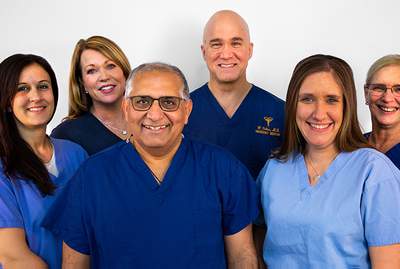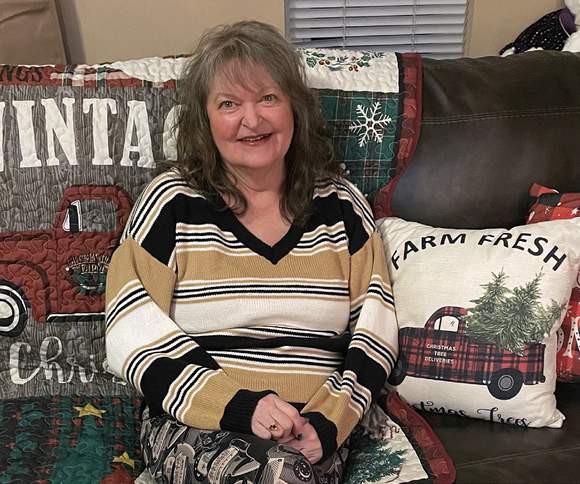
A speedy diagnosis and a minimally invasive angioplasty may have prevented Sandra Aragona of Kenosha from having a stroke.
“I would hate for anybody to have to go through what I did,” is how Sandra Aragona, of Kenosha, summed up her feelings about her health. Until recently that is.
“I had been having issues for a couple years,” said Sandra - a wife, mother of three, and grandmother of nine. “My balance was way off and I had headaches. My hands were shaking so bad that sometimes I couldn’t use my telephone or tablet. At times, I struggled to find words, and my speech was slow and slurred,” Sandra recalled. “In the summer, I love being in my pool. Not being able to go swimming was killing me. I got in the water only once or twice last summer, and had to have assistance getting out.
Then I developed shoulder pain from arthritis and disc problems in my spine,” Sandra said.
That is when Sandra went to see Dr. Arvind Ahuja, a neurosurgeon and neuroendovascular specialist with the Froedtert South Medical Group performed Sandra’s back surgery twenty years ago. “Dr. Ahuja gave me injections that relieved my shoulder pain,” Sandra said. “Then later, when I was seeing Dr. Ahuja in his office for a follow-up appointment, I suddenly began feeling really ill. Dr. Ahuja immediately sent me to the Emergency Department.”
“A cerebral angiogram showed that Sandra had a severe blockage in her right carotid artery,” Dr. Ahuja said. “The reduction in blood flow to her brain put her at great risk for a major stroke. I performed a minimally invasive angioplasty, using a balloon at the end of a catheter to enlarge her carotid artery, and inserted a stent to keep the blood vessel open,” Dr. Ahuja said. “After the procedure, Sandra improved dramatically. She is now able to walk without assistance and has returned to all her normal activities.”
“Everything is better. I can do everything that I want to do,” Sandra said. “I love cooking, and now I can cook again. And I’m going to be swimming a lot more next summer.”
“I love Dr. Ahuja. I hug him every time I see him,” Sandra said. “He’s a very sweet man, gentle and soft spoken, which makes me feel relaxed. When he performed my back surgery, I told everybody I would trust him with my life. Sure enough, twenty years later, he saved my life because I’m sure I would have had a stroke.”
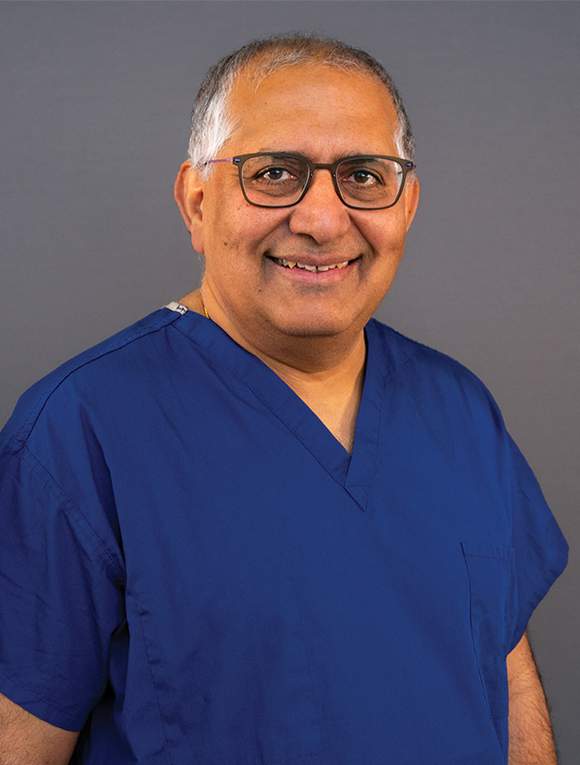
Dr. Arvind Ahuja
The need for speed
Speedy diagnosis and treatment by a whole team of skilled and dedicated health care professionals at Froedtert South was key to preventing Sandra from suffering a stroke. But for patients who have actually experienced a stroke, getting the right care as fast as possible is even more critical. And at Froedtert South, fast just got faster.
“Time is truly of the essence,” Dr. Ahuja said. “With an ischemic stroke – caused by a blood clot – you lose about a million brain neurons every minute,” Dr. Ahuja said. “That makes it really essential that patients get appropriate care as fast as possible.” “That’s why we have dramatically increased the speed with which we treat stroke patients once they arrive at the hospital,” said Shannon Godbolt, a nurse practitioner and stroke program coordinator at Froedtert South. “Our goal is to treat a patient with medication to dissolve a blood clot within thirty minutes or less of their arrival. That’s down from our past goal of forty-five minutes,” Shannon said.
To receive that speedy care, you must be at the hospital. “If a patient waits too long to come in, rehab to try to recover skills lost due to their stroke may be their only option,” Shannon said. “A patient’s best bet is to get here as quickly as possible, and that begins with recognizing stroke symptoms.”
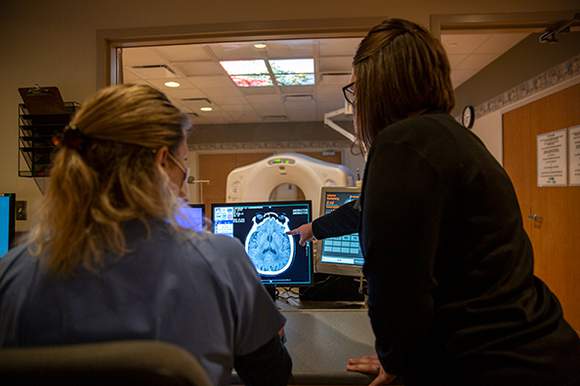
B.E.F.A.S.T. to identify stroke symptoms and get to the hospital
“The biggest mistake people make is failing to recognize that when anyone – young or old – experiences facial weakness, speech problems, weakness or numbness on one side or the other, they may be having a stroke,” Dr. Ahuja said. “The number one symptom of a hemorrhagic stroke – one caused by a burst blood vessel – is simple: the worst headache of your life.”
“I encourage patients to use B.E.F.A.S.T. to recognize stroke symptom,” Shannon said. “B for balance problems; E for eyesight problems such as blurriness, double, or loss of vision; F for a face that is drooping or numb on one side, or a crooked smile; A for an arm that is weak or numb; S for speaking difficulty; or T for a terrible headache.”
Then once a stroke is suspected, calling 911 is essential. “We are significantly more successful helping stroke patients who call 911 and arrive by ambulance,” Shannon said. “The paramedics call us on their way to the hospital to give us the patient’s symptoms, making it possible for us to determine the most appropriate treatment for them before they even arrive,” Shannon said. “Once they get to our Emergency Department, our stroke alert team takes it from there.”
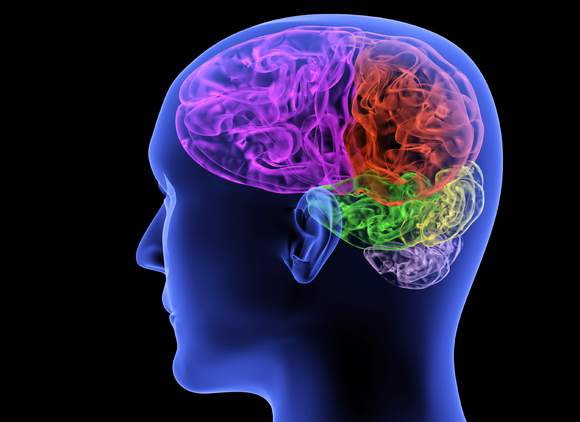
The best possible results
“In some cases, that may mean injecting medication to dissolve the clot causing their stroke,” Dr. Ahuja said. “We can also insert a catheter and physically remove a blood clot from an artery.”
“In other cases, we might need to perform surgery to remove a clot. For example, a 62 year old man who came into our Emergency Department with a very severe headache,” Dr Ahuja recalled. “He had been working out when he suddenly couldn’t stand, lost his ability to speak, and experienced a seizure.”
“A CT scan revealed a blood clot on the surface of his brain,” Dr. Ahuja said.
“We performed surgery to remove the clot. The patient did well and was sent home, but then, unfortunately, he redeveloped another clot. We performed a procedure called an embolectomy to redirect blood flow in that area and prevent clots from forming in the future. Now, the patient is doing great and has resumed all his normal activities. He told me that he thought he was going to die, but here he is, alive. For me and my team, that’s great. It makes us humble and want to say, ‘Thank you very much, God, for giving us the privilege to do that.’”
“Our objective is to be as efficient as we can so that when a patient arrives at our hospital, no time is lost,” Shannon said. “We want to offer them the best results possible. That’s why, in collaboration with our colleagues at Froedtert and the Medical College of Wisconsin, we recently switched to a different clot dissolving medication that is easier to administer. We are hoping that will help us improve our treatment times even more.”
Since 2017, Froedtert South has been certified as a primary stoke center by The Joint Commission, an independent organization that accredits healthcare organizations worldwide.
“At Froedtert South you can get personalized, top notch stroke care right here, close to home,” Dr. Ahuja said. “You will have your family close by for support.”
